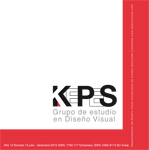Authors
Abstract
This research presents and analyzes severalVarious definitions of rhetoric and its use of this image in graphic advertising in that Ecuador have beens developed in Ecuador between 1930 and 1940 are presented and analyzed in this research. As aThe specific objective of this work will aims to establish the influence that the use of rhetoric has had in advertising in the period above mentioned and as well as the projection a forecast raised tofor professional discussion on of the inertiathe proper use of this tool in the advertising image. Advertising on in Ecuador as well as in most nations is born from a purely empirical practice and thisreason why it becomes a substantial need to analyze what occurred was produced in the past in order to establish, in the future, a before and an after for the professionalization and the itinerary itself that the professional practice has developeds.
Keywords
References
Barthes, R. (1970). La antigua retórica. Buenos Aires: Comunicación.
Beristáin, H. (2003). Diccionario de retórica y poética. (8ª ed.). México: Editorial Porrúa.
Borges, V. (2012). Público Objetivo “Target”. Recuperado de http://www.metodomarketing.com/definicion-de-publico-objetiv/
Caró A. (1994). La publicidad que vivimos. Madrid: Eresma Editorial & Celeste.
Carreras M. (1978) “Del discurso a la imagen; retórica en la imagen, Adagio, Santiago-Chile
Castells, M. (2009). Comunicación y poder. España: Alianza. (T. Hernández María).
Eco, U. (1986). La estructura ausente. Barcelona: Lumen.
Hernández, J. A., & García, M. del C. (1998). Historia breve de la retórica. Madrid: Síntesis, 17.
Kuhn T. (1962), The Structure of Scientific Revolutions. Foundations of the Unity of Science (Volumes I—II of the Encyclopedia), Inglaterra.
Lakoff G y Jhonson M. (1980), Metáforas de la vida cotidiana, Cátedra, Madrid
Mortara G. (1991), Manual de la Retórica,Cátedra, Madrid
Petty, R., & Cacioppo, J. (1984). The effects of involvement on responses to argument quantity and quality: central and peripheral routes to persuasion. Journal of Personality and Social Psychology, 46(1), 69-8. Recuperado de http://Faculty.Washington.Edu/Jdb/345/345%20articles/Chapter%2007%20petty%20and%20cacioppo%20(1984).Pdf
Pujante, D. (2003). Manual de retórica. Madrid: Castalia Universidad.
Ricoeur P. (1980), La metáfora viva. Gredos, Madrid
Walter M. (2001), La comunicación de masas: perspectivas desde la construcción de la imagen. Paidos, Madrid.

 pdf (Español (España))
pdf (Español (España))
 FLIP
FLIP





















